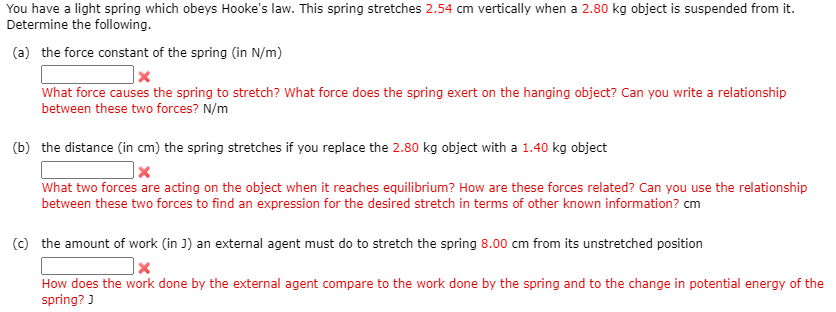You have a light spring which obeys Hooke's law. This spring stretches 2.54 cm vertically when a 2.80 kg object is suspended from it. Determine the following. (a) the force constant of the spring (in N/m) What force causes the spring to stretch? What force does the spring exert on the hanging object? Can you write a relationship between these two forces? N/m (b) the distance (in cm) the spring stretches if you replace the 2.80 kg object with a 1.40 kg object What two forces are acting on the object when it reaches equilibrium? How are these forces related? Can you use the relationship between these two forces to find an expression for the desired stretch in terms of other known information? cm (c) the amount of work (in J) an external agent must do to stretch the spring 8.00 cm from its unstretched position How does the work done by the external agent compare to the work done by the spring and to the change in potential energy of the cprina? 1
Simple harmonic motion
Simple harmonic motion is a type of periodic motion in which an object undergoes oscillatory motion. The restoring force exerted by the object exhibiting SHM is proportional to the displacement from the equilibrium position. The force is directed towards the mean position. We see many examples of SHM around us, common ones are the motion of a pendulum, spring and vibration of strings in musical instruments, and so on.
Simple Pendulum
A simple pendulum comprises a heavy mass (called bob) attached to one end of the weightless and flexible string.
Oscillation
In Physics, oscillation means a repetitive motion that happens in a variation with respect to time. There is usually a central value, where the object would be at rest. Additionally, there are two or more positions between which the repetitive motion takes place. In mathematics, oscillations can also be described as vibrations. The most common examples of oscillation that is seen in daily lives include the alternating current (AC) or the motion of a moving pendulum.

Trending now
This is a popular solution!
Step by step
Solved in 5 steps with 5 images


